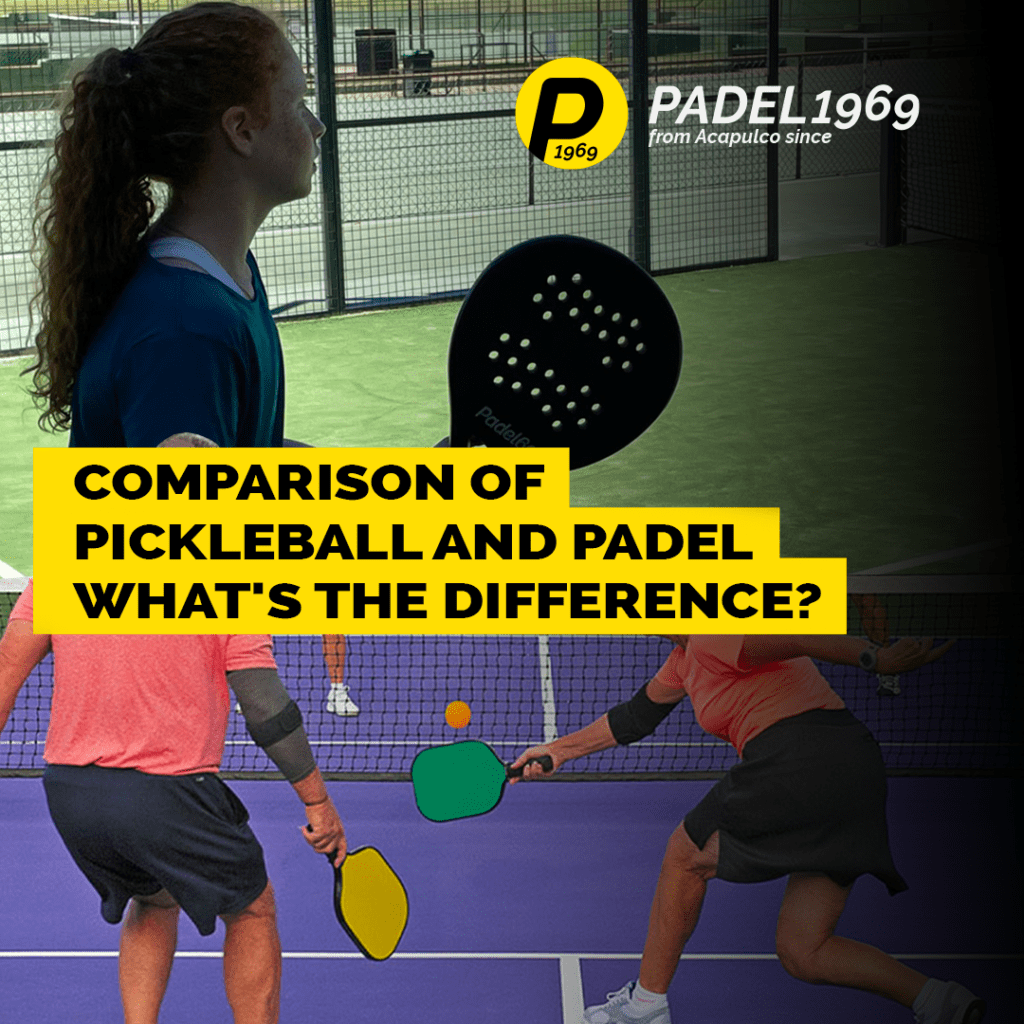New to Padel and Pickleball? These racket sports are rapidly growing in popularity all over the world and both haven’t been around for long compared to other established sports. Like tennis, both take place on a court, use a tennis-like net, and involve rallying the ball back and forth, but they’re actually very different sports. How?
Let’s get into our comparison of Padel and pickleball so you know the difference, what each involves, and which is best for you.
What is Padel?
Padel is known as the fastest-growing sport in the world, with an estimated over 25 million regular players around the world, and more starting every day. New Padel courts are being built privately and publicly all around the world and there’s no shortage of celebrities from all walks of life that have fallen in love with playing Padel for fun.
What is Pickleball?
Pickleball is a relatively little-known sport that’s similar to other more well-known racket sports such as tennis, Padel, and even ping pong. Pickleball can be easily played with access to a badminton court if you don’t have access to a Pickleball-specific court and a tennis court net. While it’s not becoming as well-known as Padel worldwide (there are only about 4 million players worldwide), there are official bodies organizing tournaments and championships.
History of Padel
Padel is a relatively young sport invented in 1969 by Don Enrique Corcuera, in Mexico. Corcuera wanted to install a tennis court at his home, but lacking the necessary space, decided to put it in a court anyway with some modifications.
One edge of the court backed onto a wall of his home, so he decided to build another wall at the other end of the court so playing conditions were the same. Finally, he enclosed the sides with wire mesh fencing, and you’ll see that Padel courts look similar today (we’ll look at courts in more detail shortly).
Almost a decade later, he introduced his friend, Alfonso Hohenlohe to the game, and Hohenlohe introduced it to Spain, where Padel spread rapidly. Before long, he organized competitions and another associate called Julio Meniteguy took Padel back to Argentina, where it spread like wildfire.
The first Padel World Championships occurred in 1992 and have continued every other year since.
To learn more about the history of Padel, click here.
History of Pickleball
Surprisingly, Pickleball also got its start in the 60s, in 1965, but hundreds of miles away on Bainbridge Island near Seattle, in Washington. Three dads are given credit for inventing the game (Joel Pritchard, Bill Bell, Barney McCullum) while trying to entertain their kids in the summer. The game was first played with homemade equipment and has since evolved. Pickleball is most popular in the US and Canada but is spreading.
Padel vs. Pickleball: Equipment
Now we know the basics of these two sports, let’s start comparing the differences, starting with Padel’s equipment.
A Padel racket is almost solid and commonly made of carbon and plastic. Padel rackets contain holes so there is less air resistance when you swing them. Inside the racket is foam which helps increase ball acceleration and reduce vibration. They are 18 inches by 10 inches, and are 3.8cm wide, making them much thicker than any other racket. Due to their density, they’re heavier than tennis rackets and about double the weight of a Pickleball paddle (Padel rackets weighing 12-14oz, paddles weighing up to 8.5oz).

Pickleball paddles differ from Padel rackets because they look much more like table tennis paddles than tennis rackets. They’re about the same size as a Padel racket but are solid and relatively square, with round edges. The original paddles were wooden, but they’re now usually made from aluminum and graphite.
A Padel ball looks almost identical to a tennis ball but is slightly smaller. A tennis ball is about 2.57-2.7” in diameter, while Padel balls are 2.5-2.63”. (For help finding the best Padel ball, click here.)
A Pickleball ball is very different from a Padel ball, as they are plastic and have holes in them. The balls can be any color but must be a solid color.
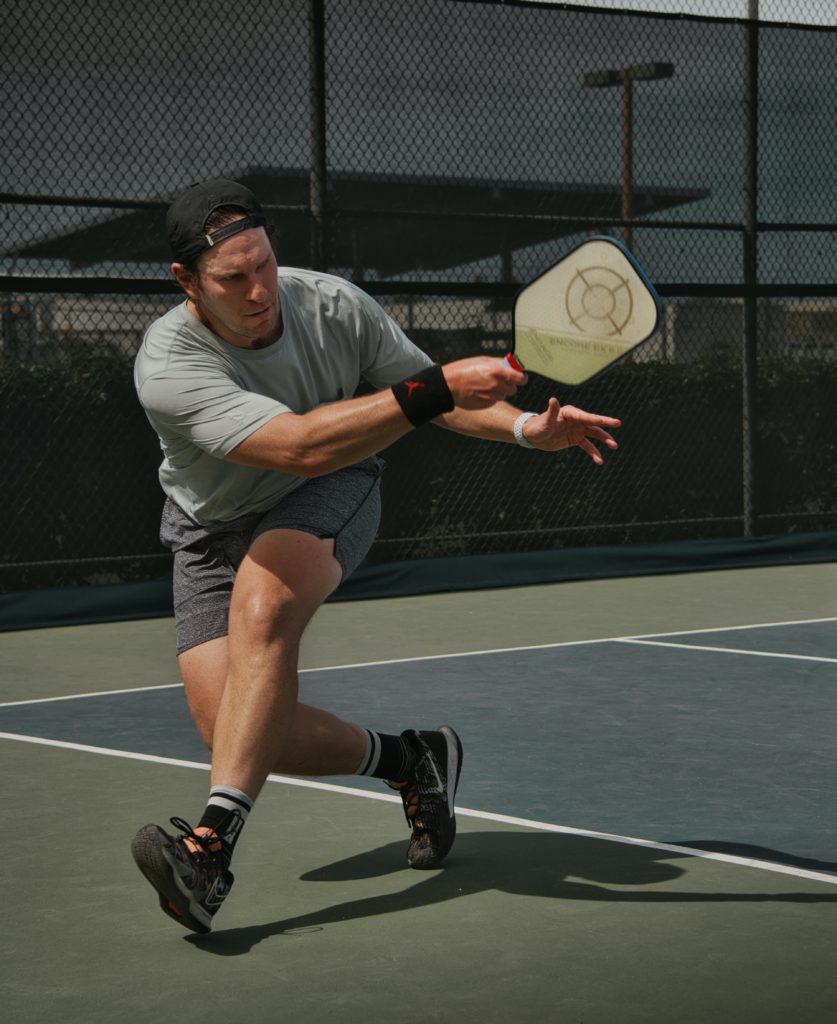
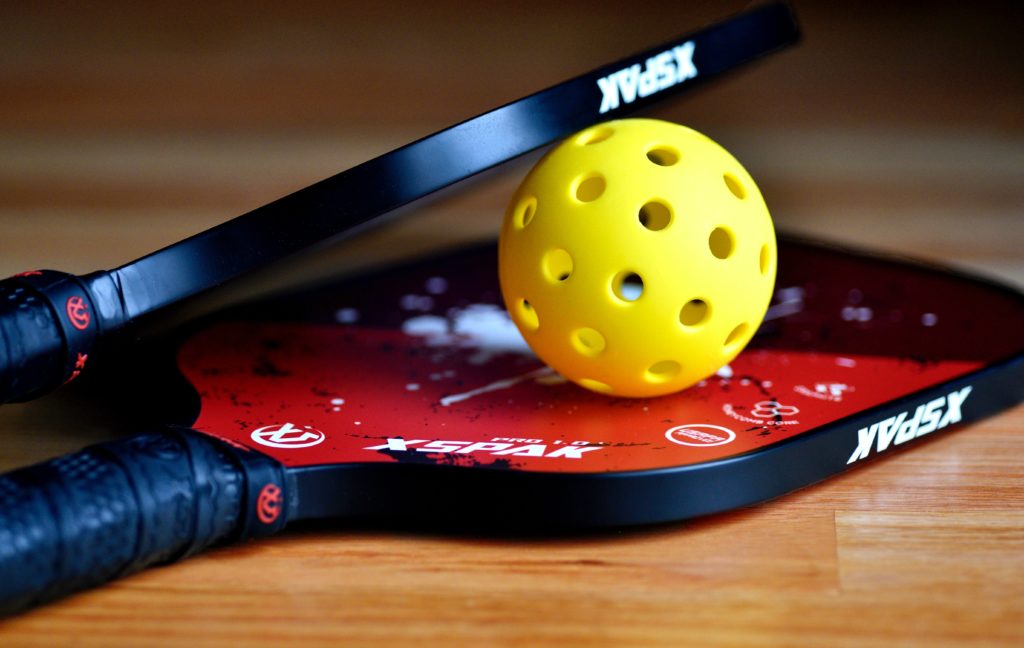
Padel vs. Pickleball: Courts
This is perhaps where these two sports differ most at first glance. As we touched on in the history of Padel, a Padel court is enclosed, like a squash court. Nowadays, Padel courts are a little more advanced than the first brick-and-wire courts and are usually enclosed with glass and wire so it’s easy to spectate.
A net (88cm tall) divides the two sides of the court from wall to wall and there is a service line (the white lines) parallel to the net, about 7m away (22.8ft). A line also divides the two halves. Padel courts usually use artificial grass, especially at the highest levels, but other surfaces can be used, too.
A Padel court is usually 20m x 10m (65.6ft x 32.8ft) (though some smaller single-player courts can be found, though they are rare). There are two open doorways on either side of the net on both sides of the court which players not only use to enter the court but can use to leap out and return rallies from! This is one of the most dramatic and interesting parts of Padel and is very entertaining to watch.
Premium Panoramic Padel Courts from PADEL1969, read more.
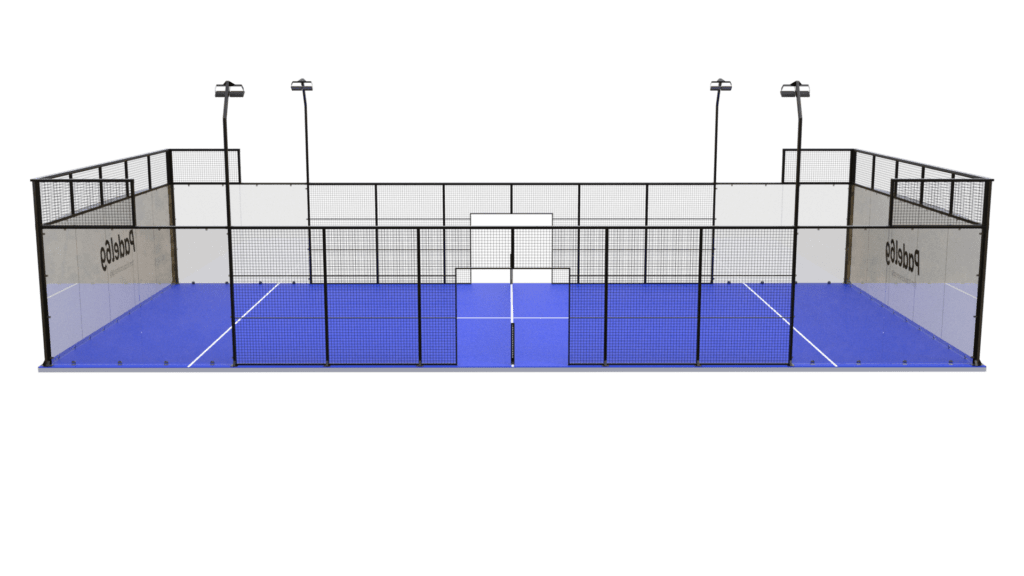
A Pickleball court is 44ft x 20ft (13.4m x 6.1m) which makes it almost half the size of a Padel court.
Pickleball is essentially played on a Badminton court, the only difference is the location of the service lines. A Pickleball court has a 7ft wide non-volley zone, whereas a badminton court has a 6.5ft wide non-volley zone. A pickleball court has two service areas on either side of the net, but unlike a badminton court, there are no additional boundary lines around the edges. There are no walls around the boundary, like in Padel. The edge of the court is open like a tennis court.
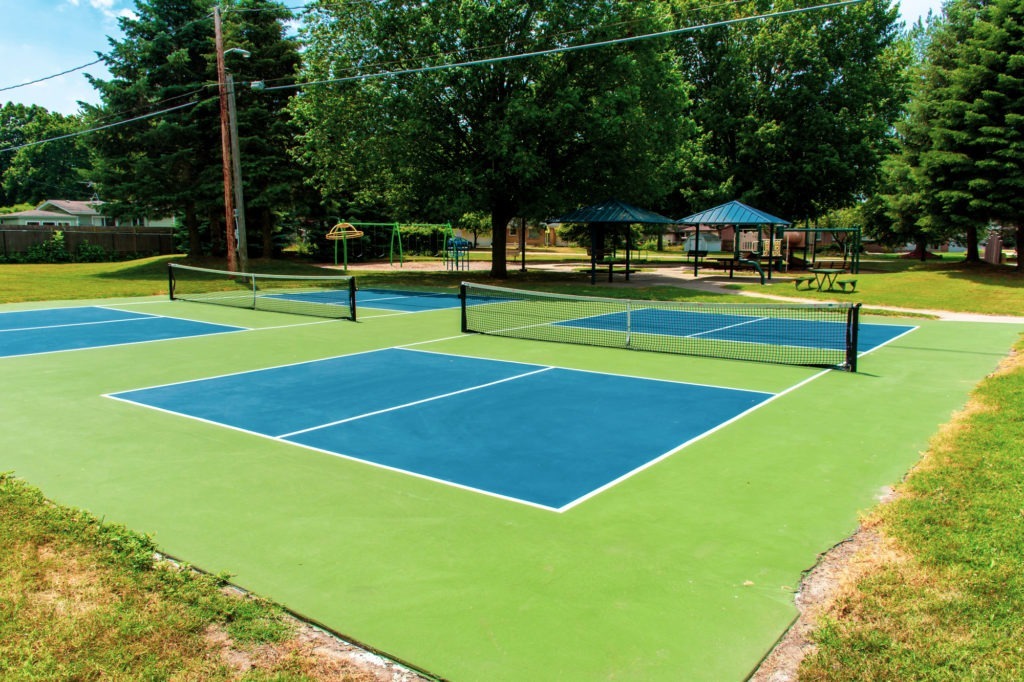
Padel Rules & How Padel is Played
Padel is traditionally only played with doubles, either men, women, or mixed. Padel starts with a diagonal serve, like in tennis, but is served underarm. You are not allowed to hit the ball higher than hip height, and instead of throwing it up into the air, like in tennis, you bounce it off the floor.
From that moment, the ball seldom goes out of bounds because it’s allowed to bounce off the walls and can even be hit from outside the court back in to continue to play. You are allowed a maximum of one bounce on the floor before you hit it.
The scoring system in Padel is the same as in tennis (15/0, 30/0, 40/0, deuce, and so on). You need to win 6 games, 2 games ahead of your opponent, to win a set. After a game is won, the other side gets to serve. You need to win 2 or 3 sets to win the match. You score a point if your opponent fails to return the ball, or if the ball bounces twice.
For more information about the rules, click here.
Pickleball Rules & How Pickleball is Played
Pickleball is interesting because while those playing look at first glance as though they’re playing something close to tennis, the rules are much closer to table tennis or badminton. You can play Pickleball as singles or doubles, and to serve the server must keep their back foot behind the backline and underarm the serve, like in Padel, but with no initial bounce.
The player on the right-hand side serves first (which side goes first can be decided with a flip of a coin). The serve and return must bounce once but the serve cannot bounce in the “non-volley zone.” The game continues until someone makes a fault. A fault can be failing to return the ball, hitting the net, or if the ball goes out of bounds.
Scoring in Pickleball can be confusing if you’re only familiar with tennis scoring. First, you can only score if you’re the team that served. Essentially, if you didn’t serve, you are simply trying to prevent the other team from scoring. If you score, you switch sides of the court. If not, your partner serves, and then it goes to the other team. Most Pickleball games are played as the first to 11 points, but you need a 2-point lead to win.
Padel vs. Pickleball: Competitions
Both games are played for fun and competitively, on both a national and international level. However, Padel has more established championships and tournaments, there are Pro Padel players, and it attracts a bigger audience.
Are there any other key differences between Padel and Pickleball?
It’s worth noting that Pickleball while requiring just as much skill, is not as fast-paced as Padel. If you watch high-level Padel (or even competent casual players) you’ll notice that it’s fast and dramatic.
Pickleball is a slower-paced game, likely due in part to the flat paddle and plastic ball. A Padel racket contains foam designed to increase ball acceleration, and the ball is built (like a tennis ball) to be bouncy.

Should I play Padel or Pickleball?
If you love a fast-paced game where you’ll burn plenty of calories and the game feels unpredictable, you’ll love Padel. If you’d prefer something a little slower-paced, Pickleball may be the better choice. Of course, there’s no reason why you can’t play both!
When you’re ready to start playing Padel, make sure you get a PADEL1969 racket in your hands – it will last a lifetime. Shop here.
Follow us @padel1969official

